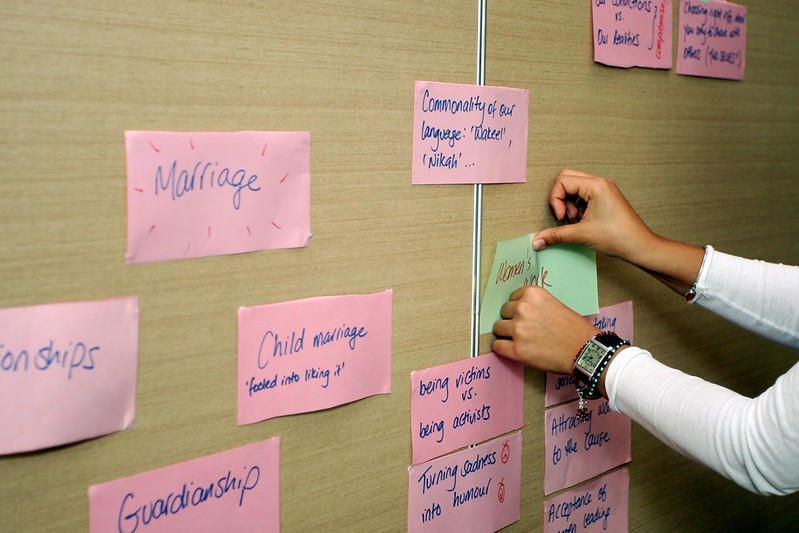4.4.6 The Challenge of Gender Equality

Plenary session at the Musawah global conference, 2012. Photo Credit: UN Women/Hamsiah Abu Bakar, CC BY-NC-ND 2.0.
Musawah, a global movement for equality and justice in the Muslim family, was launched in 2009 in Malaysia. Encompassing Muslims striving for women’s human rights around the world, the movement coordinated multi-year research into modern family laws in Muslim states, interrogating the theological interpretations these laws relied on, and exploring their impacts on the lives and well-being of women globally.
The 2015 book Men in Charge?: Rethinking Authority in Muslim Legal Tradition emerged from this scholarly endeavor. Grounded in feminist pedagogy, the book presents with painful clarity the personal stories of dozens of women and families suffering under certain dominant legal and social interpretations of Muslim family law. It also presents alternate perspectives for understanding the divine and theological sources that orient the relationship between men and women. In this opening chapter, editor Ziba Mir-Hosseini, a legal anthropologist and scholar, traces the intellectual emergence of Muslim gender equality work. Regarding the aim of Musawah, she writes:
“Instead of striving for gender-neutral laws, the emphasis here is on the kinds of laws and legal reforms that regulate power relations between genders in such a way that women are able to enjoy dignity, security and respect in the family and full participation in society” (39).
Guiding Questions:
- Why does Mir-Hosseini suggest that Muslim gender equality efforts occurred at the different points in history she describes? Were there societal changes that caused these ideas and efforts to take root?
- How did the classical juristic understanding of qiwamah provide the rationale for other limitations on women’s rights and economic and political participation? Do any of these limitations continue in your community today?
- Why was the codification of certain Muslim fiqh rulings into nation-state laws so important for the lives of millions of Muslims? What does Mir-Hosseini mean when she says that state codification “entrench[ed] traditional patriarchal interpretations (19)?
- Explain Al-Haddad’s policy of gradualism. How does he explain inequitable treatment, especially that which is tolerated in Islamic scripture?
- For Rahman, if the socioeconomic roles that lead to gender inequality in 4:34 change, does that mean gender inequality will need to change as well? Do you agree with his interpretation of 4:34?
- How do Abu Zayd’s “five domains” explain his understanding of the multifaceted Qur’anic “view on gender relations” (33)?
- What does Mir-Hosseini mean when she says that the “problem is not with the text but with the context” of Islamic scripture and religious rulings (38)? (For more on the Shari’ah, recall learning material 1.4.4.)
- What strategies have twentieth-century Muslim reformists used to address the dissonance between Aristotelian and modern understandings of justice?
- How do you think Muslims should approach shifting understandings of “justice” and “equality?”
If the PDF does not appear below, you can find it here.
Note: Reproduced with permission of Oneworld Publications through PLSclear.


